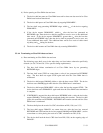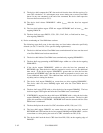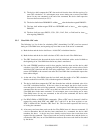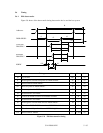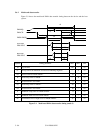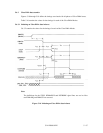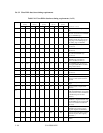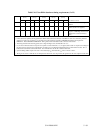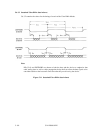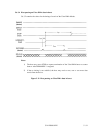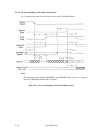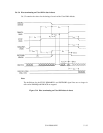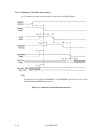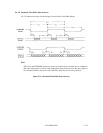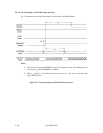
C141-E090-01EN 5 - 89
Table 5.16 Ultra DMA data burst timing requirements (2 of 2)
NAME MODE 0
(in ns)
MODE 1
(in ns)
MODE 2
(in ns)
MODE 3
(in ns)
MODE 4
(in ns)
COMMENT
MIN MAX MIN MAX MIN MAX MIN MAX MIN MAX (see Notes 1 and 2)
t
ZIORDY
0 0 0 0 0 Minimum time before driving
IORDY
t
ACK
20 20 20 20 20 Setup and hold times for DMACK-
(before assertion or negation)
t
SS
50 50 50 50 50 Time from STROBE edge to
negation of DMARQ or assertion of
STOP (when sender terminates a
burst)
Notes:
1) Unless otherwise specified, timing parameters shall be measured at the connector of the sender or receiver to which the parameter
applies (see Note 5 for exceptions). For example, the sender shall stop generating STROBE edges t
RFS
after the negation of
DMARDY-. Both STROBE and DMARDY- timing measurements are taken at the connector of the sender.
2) All timing measurement switching points (low to high and high to low) shall be taken at 1.5 V.
3) t
UI
, t
MLI
and t
LI
indicate sender-to-recipient or recipient-to-sender interlocks, i.e., one agent (either sender or recipient) is waiting for
the other agent to respond with a signal before proceeding. t
UI
is an unlimited interlock that has no maximum time value. t
MLI
is a
limited time-out that has a defined minimum. t
LI
is a limited time-out that has a defined maximum.
4) Special cabling shall be required in order to meet data setup (t
DS
) and data hold (t
DH
) times in modes 3 and 4.
5) Timing for t
DVS
and t
DVH
shall be met for all capacitive loads from 15 to 40 pf where all signals have the same capacitive load value.



